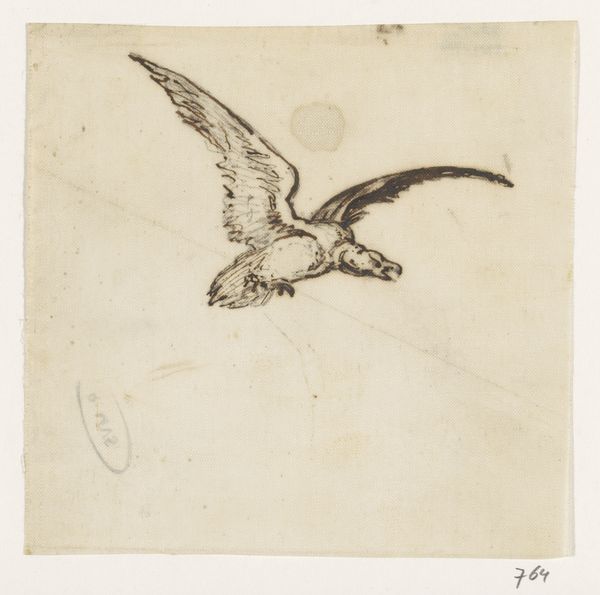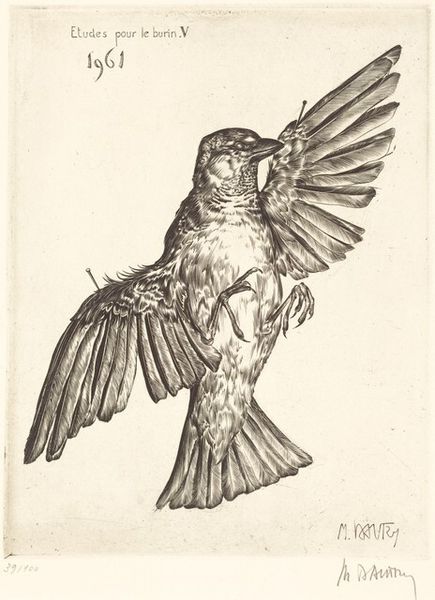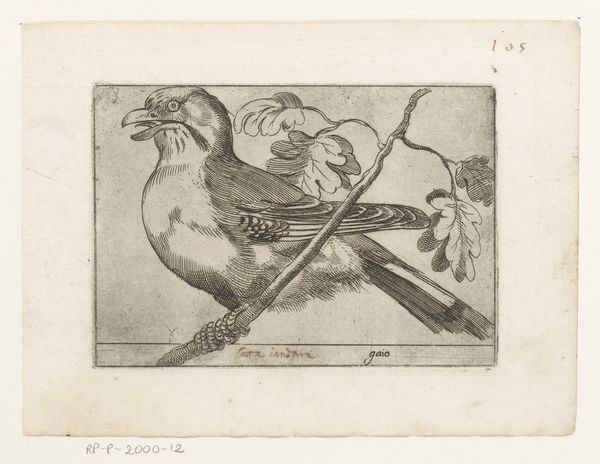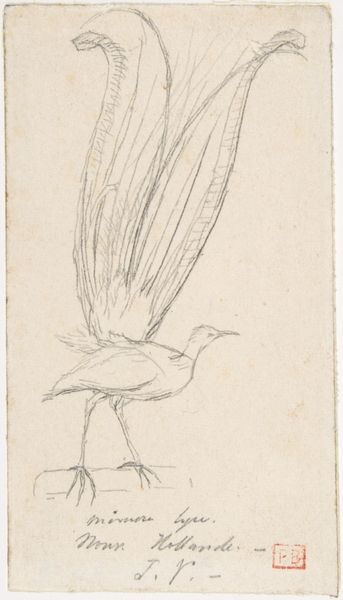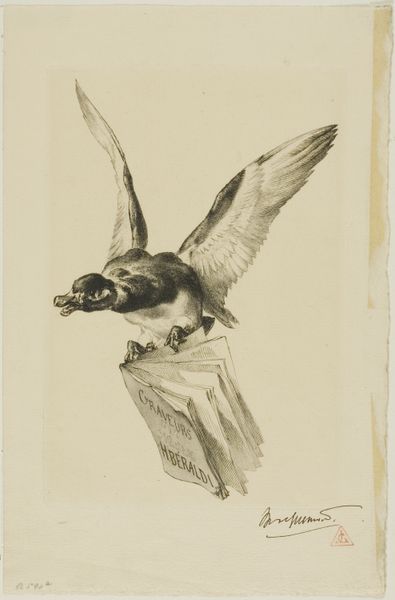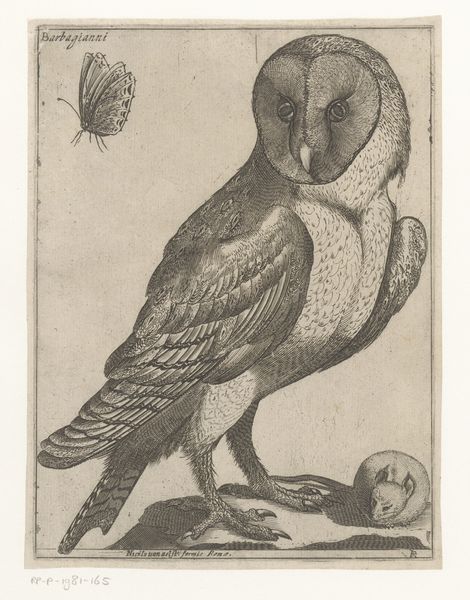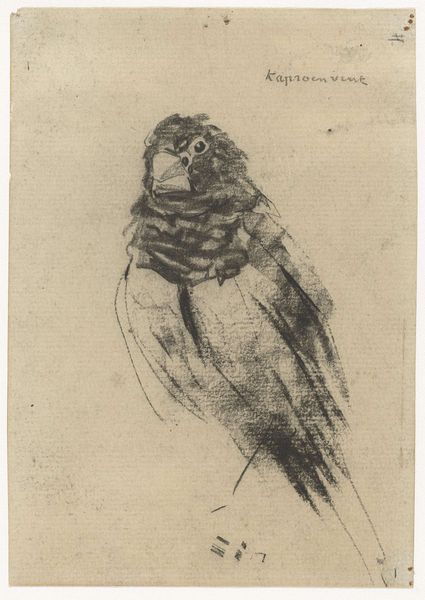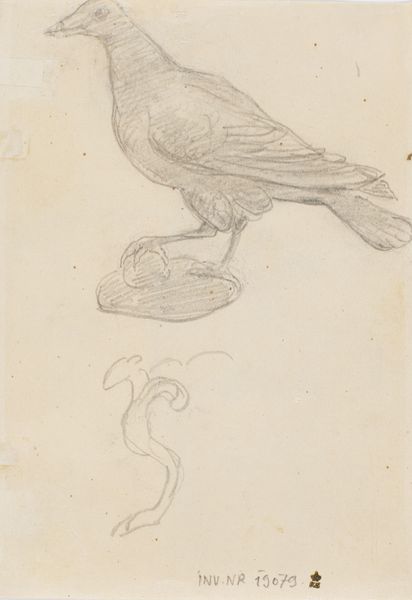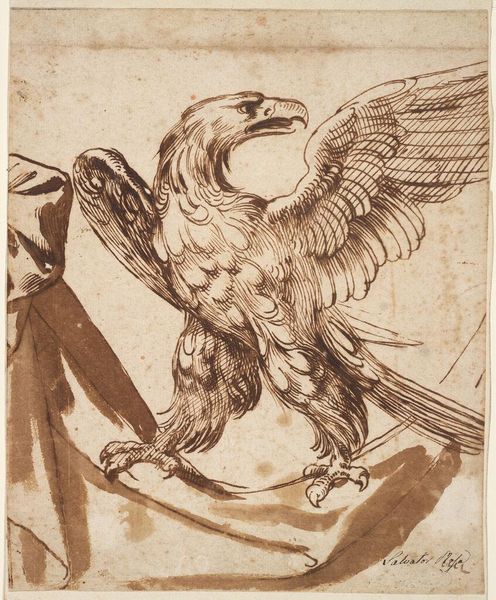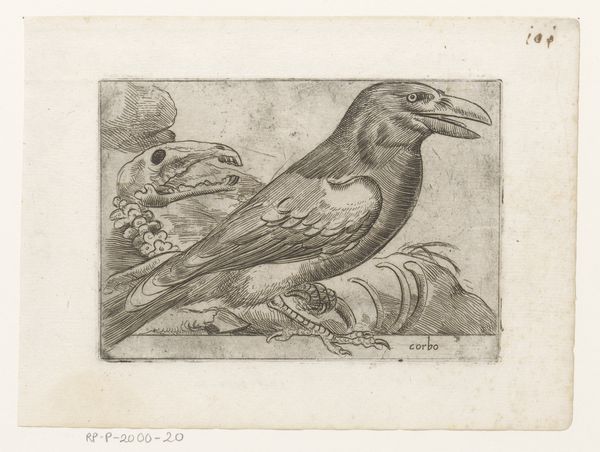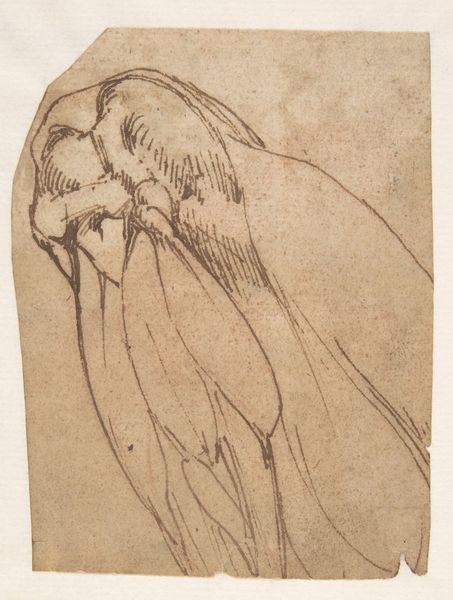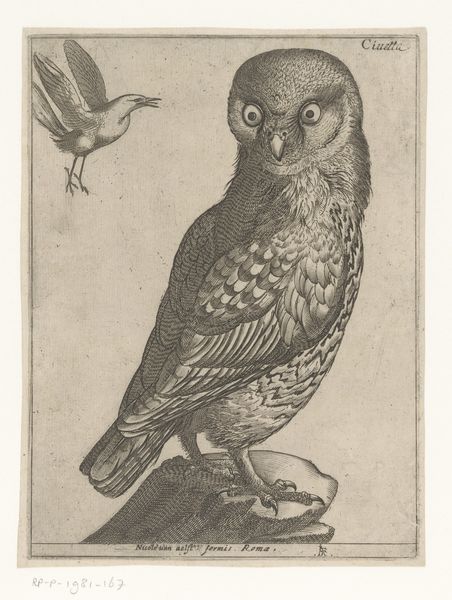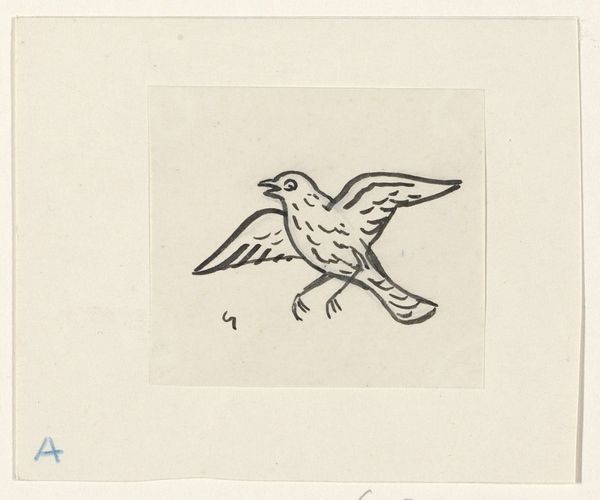
drawing, paper, ink
#
drawing
#
ink drawing
#
landscape
#
figuration
#
paper
#
form
#
ink
#
line
Dimensions: 138 mm (height) x 138 mm (width) (bladmaal)
Editor: This is P.C. Skovgaard's "Singing Lark. Decorative Draft," likely made between 1817 and 1875, an ink drawing on paper. It has a very light, almost airy quality. What strikes me is its simplicity, but it feels full of potential. What do you see in this piece, especially considering the period it was created? Curator: Well, first, it's interesting to think about this work not just as a sketch, but as a "decorative draft." It speaks to the shifting role of art in society during that period. Was this meant for a public building, perhaps? Skovgaard was working in a Denmark undergoing significant national romanticism. The lark itself is a symbol, isn’t it? A symbol often associated with springtime, hope, and even national identity. Think about its potential as part of a larger decorative scheme. Where would you envision such a motif appearing in public life? Editor: I could see it in a public hall, or even as a design for textiles. The national romanticism angle makes a lot of sense, connecting to ideas of freedom and nature, maybe a growing sense of cultural identity. Is this kind of patriotic symbolism common for Skovgaard? Curator: Indeed. Skovgaard is a key figure in establishing a distinctly Danish landscape painting tradition. He, along with others, depicted the Danish countryside as a source of national pride and identity. By focusing on the lark, he's not simply showing us a bird, but connecting that bird to larger cultural narratives. Also, the sketch itself is accessible. Not high-art. It is populist, suggesting public function. Editor: So the choice of subject and its accessibility point to the potential democratization of art. Something meant to uplift collective spirit. Curator: Precisely. And even a preparatory drawing can embody this social function, making it relevant for broader societal engagement. Any artist makes choices relative to socio-cultural context. Editor: This reframing has opened up my perspective considerably! Thinking about how artistic expression is shaped by cultural movements, not just personal intention, provides richer context. Curator: Indeed. And by looking closer, we find how artworks participate actively within society.
Comments
No comments
Be the first to comment and join the conversation on the ultimate creative platform.
